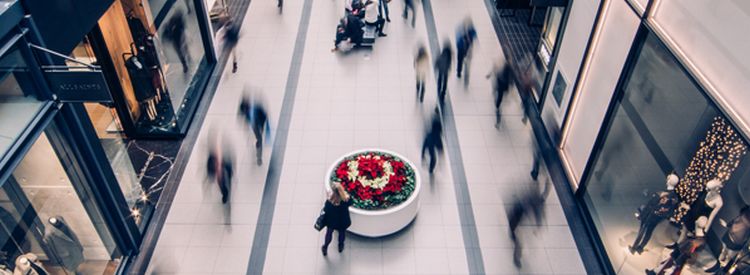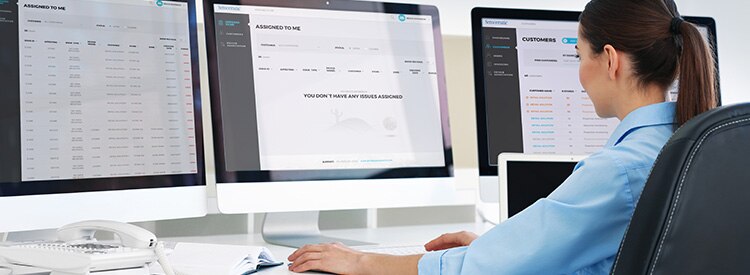Article
Six reasons why you’re crazy to ignore retail traffic analytics

Keeping your seat at retail’s top table takes constant reinvention.
Rather than lose sales to the web, traditional brick and mortar retailers need to provide memorable experiences and fantastic service levels on the store floor. The best stores are becoming smarter and more streamlined for the consumer, and easier to manage for operations teams and head office.
Footfall analytics helps you understand your target audience, and react with lightning speed to meet shopper needs in day-to-day shopping
ShopperTrak’s latest eBook How to incorporate retail traffic data into your strategy for growth explains how to identify, extract and analyze traffic data, and how to apply valuable data insights to store operations. This makes it possible for you to build in-store excellence, which will help deliver growth.
Only the smartest, fittest and most agile retailers will survive.
From the report, here are six of the direct business benefits of investment in traffic counting and analytics:
1. Improve the shopper experience
Traffic and conversion data helps retailers understand when the peaks and valleys in shopper demand will come throughout the day, week, and year. Store teams can be fully prepared for the rush at peaks like Easter, Eid, Mother’s Day and Holiday, to solve problems like regular bottlenecks at the checkout and unmanned dressing rooms, and to be operationally streamlined to meet shopper needs.
2. Drive store productivity
Customers enjoying a better service in stores, usually leads to higher conversions – making the store space more productive. Sales per Shopper (SPS) and Average Transaction Size (ATS) can be driven up with prior knowledge of retail traffic trends, because the store is ready for action when sales opportunities arise – particularly ‘power hours’, the crucial hours when traffic numbers peak.
3. Improve labor scheduling/store productivity
Labor can be optimized to ensure the best sales people are in the right department at exactly when the biggest sales opportunities are expected. The optimum number of employees during shopping hours can also be fine-tuned. This is when Shopper-to-Associate-Ratio comes into play, ensuring you have the resourcing to exactly match your type of store, and the traffic opportunity. Break-times for sales people need to be scheduled so that they never clash with power hours.
4. Drive basket growth through a consultative sales approach
With the right training completed, and with labor scheduling optimized, store teams are in a great position to ramp up their selling expertise and grow the ATS. Stores with clear instructions of when to expect changes in traffic trends will be primed to activate selling initiatives at the right time. By benchmarking across a store estate, it becomes clear what commercial benefits can be expected from investment in training, events or special sales activities.
5. Optimize existing store footprint
Store layouts can be designed to maximize traffic hotspots and traffic flow, ensuring the use of space is as profitable as possible. New concept stores can be tested and benchmarked over time to ensure the best ideas are rolled out. And retailers can make property portfolio decisions based on traffic and demographic data analysed over a set period of time.
6. Align marketing initiatives with operations
Retailers can be fully prepared for known calendar peaks, and able to focus on boosting conversions and ATS on key dates, in line with planned marketing activities. At key points of the year, return on investment in marketing campaigns is more likely if traffic data is factored into the planning and merchandising schedule. With social marketing becoming increasingly important, flash sales and promoted products can be measured in terms of the traffic into stores achieved. The simple measurement of traffic uplift as a result of a marketing campaign can help retailers improve campaigns over time, and make them as cost-effective as possible.
Raise your game
Across the global retail sector, technology is increasing the performance of physical stores. Retail footfall analytics is an increasingly important tool for brick and mortar stores, as they compete with online players. The beauty of making important staffing, marketing and store planning decisions based on real-time data and longer-term trends is the certainty this provides. With traffic counting technology it’s relatively easy to raise your game, and join the realm of retailers who fully understand their store environment, and are constantly improving the shopper journey, and the customer experience.
Contact us today for a demonstration on how traffic data can improve leasing models, and boost profitability in your shopping centres.
Download How to incorporate retail traffic data into your strategy for growth for further insight and advice on how traffic data can future-proof stores.
Explore Related Topics

Ready to see how Sensormatic Solutions can transform your bottom line?
Contact UsStay one step ahead with our articles, insights and latest news.
See more


